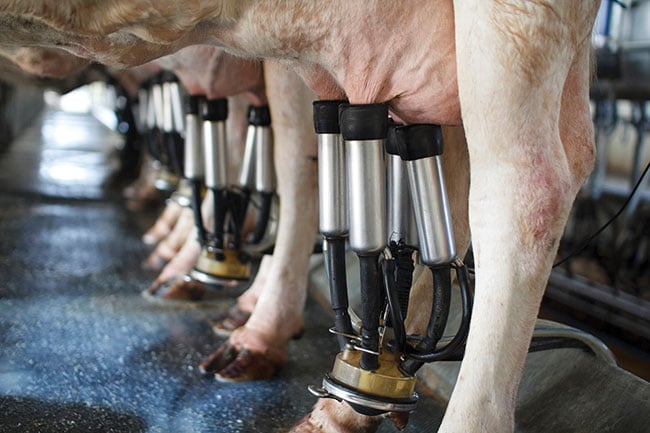
Photonics to Help Moo-ve the Dairy Industry Along
The milk supply chain generally starts on a dairy farm, where the milk moves from the cows to cooling storage tanks and then to tanker trucks that transport the milk to a dairy processor. There, it’s tested to ensure it was properly chilled and is free of bacteria. The milk is homogenized, pasteurized, packaged, and shipped. Getting that milk from dairy farm to store shelf is a complicated process and requires a lot of testing along the way.
A new optical sensor that can check the presence of contaminants in milk and produce a detailed reading in five minutes is set to dramatically reduce costs, wastage, and antibiotic use linked to the production, quality control, and processing phases in the dairy industry.

Courtesy of iStock.com/Davizro.
European researchers from eight different countries involved in the MOLOKO — Multiplex phOtonic sensor for pLasmonic-based Online detection of contaminants in milK — project will use their milk scanner to check for two proteins and 10 contaminants, taking measurements directly on-site at each point of the long and logistically spread milk value chain.
Still in the developmental stage, the MOLOKO optical sensor will be based on the integration of an organic light-emitting transistor as the light source, an organic photodiode as the light detector, and functionalized plasmonic nanograting for the measurement and detection of proteins and contaminants.
Project coordinator Stefano Toffanin told Photonics Media the detection scheme is based on innovative immunoassay technology that also implements a recombinant-antibody approach.

Courtesy of iStock.com/Toa55.
“We believe that the integration of organic optoelectronic components allows the highest degree of miniaturization with reduced or no use of other optics,” he said. “The synergic combination of nanoplasmonic components and a novel noncompetitive assay concept can conjugate high sensitivity with specificity in the detection, while reducing the unwanted matrix effect that is typical in milk analysis.”
Delivering a detailed reading in about five minutes, the sensor can look for any antibiotics ingested by the cows that have been transmitted to the milk. Using the collected information, companies can prevent contaminants, such as antibiotics and aflatoxins, from entering the food chain. The miniaturized sensor system can be integrated into milking machines for inline detection and used by technicians at the dairy plant and farm levels before it reaches consumers.

Courtesy of iStock.com/IakovKalinin.
“The ability to monitor milk cheaply and regularly at point of care means farmers and the National Official Control Body can build up a data profile for animals, tracking health,” Toffanin said. “Earlier intervention by farmers and veterinarians can lead to prudent use of antimicrobials and an overall reduction of their use.”
Across dairy farms today, standard tests take days to perform, whereas this new palm-sized sensor will be the easiest way to check the presence of milk components that are quality parameters for milk and other dairy products. The same readout can help prevent food poisoning outbreaks, while at the same time predicting milk quality and cow health.
MOLOKO aims to develop a fast, sensitive, cost-effective analytic system for pathogen detection in milk — mooving the entire production and supply chain a little bit faster.
Published: September 2018